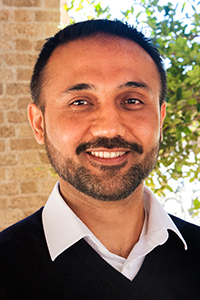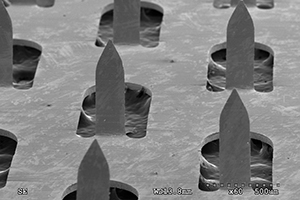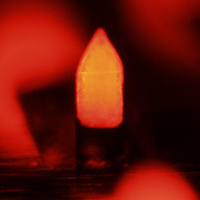Dr. Harvinder Singh Gill Awarded $200,000 CPRIT Grant to Develop Microneedles for Cancer Drugs
By Amanda Miller

Cancer of any kind is difficult to treat, in part because it remains a challenge to target affected cells without compromising those that are healthy. However, there can be great chances of recovery for some patients with tumors if it is possible to surgically remove the entire malignant mass, leaving the remaining healthy cells intact. Unfortunately, in the case of oral tumors, or cancer of the mouth, this could result in removing parts of the tongue, cheek, and lips. Surgical methods as these lead to two primary postoperative concerns: significant loss of function (including but not limited to difficulties in eating, talking, etc.) and, in some cases, severe psychological distress and cosmetic limitations as a result of physical alterations to part of the face.
In any case, oral tumors cannot be left to grow, as this form of cancer is particularly aggressive and can spread easily to other parts of the body, even traveling through the bloodstream to vital organs or bones. Alternative treatments for oral tumors have included injecting cancer-fighting drugs with needles to specific areas in hopes of shrinking the tumor before surgical removal, or possibly eradicating the tumor altogether. Injecting drugs into tumors using conventional hypodermic needles is challenging because it is difficult to dispense the drugs evenly within the tumor. Portions of the drug are also likely to be pushed by the injection-pressure into surrounding tissue, thereby leaving the tumor mass it was meant to target and potentially killing healthy cells.

Image credit: Akhilesh Shakya
Dr. Harvinder Singh Gill, assistant professor of chemical engineering at Texas Tech, has received a $200,000 grant from the Cancer Prevention Research Institute of Texas in order to create a new, minimally invasive, and comparatively painless method that minimizes the removal of tissue and negative post-procedure outcomes for treating oral squamous carcinomas, which account for 90 percent of all head and neck cancers. Gill's method consists of utilizing a small patch of microneedles to deliver a drug of choice to the tumor directly. Starting out as a thin sheet of stainless steel, the microneedles are cut out of the steel and bent upward, resulting in a patch with a flat surface containing dozens of needles about 700 microns in length and 200 microns in width at close and calculated proximity to each other. These miniature needles can then be coated with a cancer drug of choice, and applied to the location of cancerous tissue. These drugs are water soluble, and therefore dissolve into the tissue. Within minutes, the drug will spread out from each point of insertion until the entire surface area of the tumor is covered, and what was once on the microneedles is now inside the tissue, fighting the cancer.

Image credit: Seth Boese
It is possible for Gill to customize the spacing of the microneedles to uniformly and directly apply the drug, as opposed to single injections with traditional needles. The microneedles can be coated with the drug through a micro-precision coating device made specifically for the coating process. The drug is thereby effectively and efficiently applied only to the microneedles themselves and not to the stainless steel surface, minimizing waste of expensive resources. This customized coating device also allows for controlling dosage of the drug by determining the amount adhering to each microneedle.
In addition, there is potential to encapsulate the chosen drugs in microparticles that similarly adhere to the surface of the microneedles. These microparticles could more slowly release the drug into surrounding tissue, allowing for the procedure's effects to last up to weeks or months instead of only days. This method could also allow for patients to receive treatment less frequently while still reaping its remarkable benefits.

Image credit: Seth Boese
Gill's research will be conducted over a two-year period. The ultimate goal of the microneedle applicators is to either completely or at least partially eliminate the necessity of surgical removal of oral tumors. The results of this research could have profound effects on the way that oral cancer is treated and on the well-being of — as well as quality of life — for patients diagnosed with oral tumors.
Grant Title:
Minimally Invasive Intratumoral Drug Delivery Using Micronedles to Treat Oral Squamous Carcinomas
Edward E. Whitacre Jr. College of Engineering
-
Address
100 Engineering Center Box 43103 Lubbock, Texas 79409-3103 -
Phone
806.742.3451 -
Email
webmaster.coe@ttu.edu
